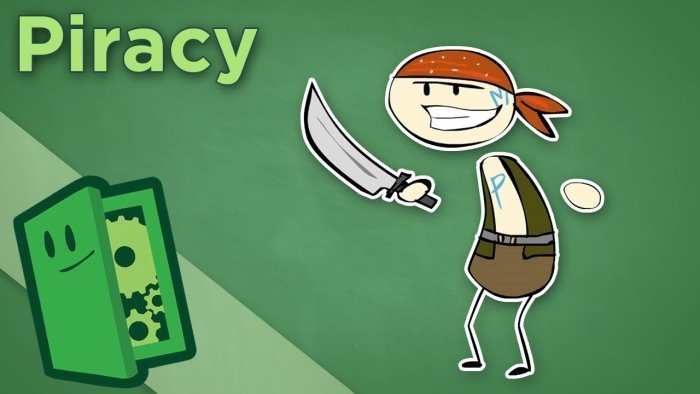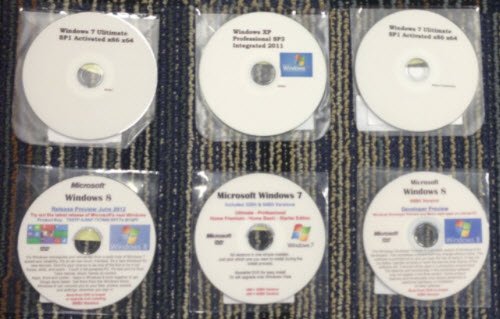The market for pirated software is huge, and consumers easily fall into the trap of getting ‘real’ software products at dirt-cheap prices, which helps them do the job. But in adopting pirated software, consumers risk privacy intrusion, loss of sensitive data, substantial financial losses and costs, and a big waste of time trying to fix system problems.

Illegal software is one of the unfortunate staples of the internet, and it’s not going away any time soon. Now, while it might come off as a good thing when downloading Windows software illegally, it’s really not. No amount of savings can protect you from the potential issues facing illegal software.
Consequences of using Pirated Software
Pirated software can be a huge issue for your computer and for you. If you save private information on your computer, we suggest staying away from these types of tools, no matter the temptation.
You see, trying to avoid paying for software could cost you more than what you refused to pay, and that would be ironic, right?
Reasons why you should not download illegal software
- It’s just not morally right
- No support
- No new updates
- Likelihood of Malware infection
- You are not supporting the developers
- Possibility of legal action.
1] It’s just not right
Not everyone knows the law that concerns acquiring illegal software. Depending on which country you live in, you could face jail time or pay a huge fine if you are caught with pirated software.
These days, many software developers are adding certain tools to their work to determine whether people have paid for the privilege. Without a valid license, folks could face the full brunt of the law in their respective countries.
2] No support
This might not be a huge problem since it’s almost impossible not to find help on the web that is freely available for popular tools. Still, there are some situations where only the developer can fix, and if you do not have a license key, you’re out of luck.
3] No new updates
One of the biggest issues with illegally attained software is the fact that for many, the update process is not active. A license key is usually required for the software to go online and automatically download updates.
With a problem like this, the user will be forced to redownload a new version of the pirated software every time there’s an update. They will have to go through the same tiring process of enabling it to work smoothly without hiccups.
4] Virus and Malware
Let’s be honest here. Software downloaded from pirate websites is usually infected with some form of virus or malware. Over the years, many users of the Windows operating system have had their computers rendered useless due to these activities.
Yes, Windows 10 is more secure than ever due to Windows Defender. However, anti-virus and anti-malware tools are not perfect. There will come a time when something will slip through the cracks, and you can only hope it’s not ransomware.
5] You are not supporting the developers
In a way, you are stealing the product. Software creators put a lot of effort into their work; therefore, if you want to take advantage of what they’ve created, pay for it like any upstanding citizen of the internet. If you’re unsure if the tool is worth using, how about using the trial version? In many cases, a trial is available. If this is not the case, then read multiple reviews on the web to reach a complete consensus.
6] Possibility of legal action
If you are found using illegal or stollen software, you could be subject to legal action, which you definitely do not want.

A few years back, Microsoft did a small experiment where it went out to the local markets in Melbourne to purchase counterfeit Windows and Office software from four different sellers. These pirated disks were then tested, the results of which were worrying.
Five out of the six Microsoft Office disks were infected with malware while six out of the twelve Windows disks were duds (could not be installed and run). Of the other six disks which could be run and tested successfully, the following was observed:
- Two were infected with malware;
- All the six copies had Windows Update disabled;
- All the six copies had the Windows Firewall rules changed.
Of the total of the twelve counterfeit software copies that could be installed successfully (six Office and six Windows) and tested, the following was affirmed:
- Seven copies (58%) were infected with malware
- A total of 20 instances of six different types of malware code found.
This means serious trouble for users who unsuspectingly work on counterfeit Microsoft software, especially when dealing with confidential information like financial statements, sensitive passwords, personal media items, etc.
Read: What is the Microsoft Compliance Program.
These findings were backed up by an IDC study done then, on The Dangers of Counterfeit Software, commissioned by Microsoft, which found that:
- One in three consumer PCs with counterfeit software will be infected with malware;
- Consumers globally will waste US$22 billion and 1.5 billion hours dealing with the issues, such as recovering data and dealing with identity theft as a result;
- 26% of consumers who installed counterfeit software had their PC infected with a virus;
- 78% of counterfeit software programs downloaded from pirate internet sites or P2P networks installed tracking cookies or spyware.
Counterfeit pirated software might be cheaper, or even free, but it’s not worth the risk to use it!
Go here to learn how to find out if any Microsoft Windows Software is Genuine and to report Counterfeit software.